The biggest storm -- Typhoon Hagibis -- to hit Japan in decades left deaths and destruction in its wake, as it battered the central and eastern parts of the country.
The storm flooded rivers and caused secondary weather patterns like tornados that destroyed homes and public property in areas east of Tokyo.
Hagibis hit the capital, where streets were largely deserted and people were bunkered down, moving past the city by midnight, but not before flooding some sections.
Reports state that the storm killed as many as 33 people and injured 186 others.

A woman carries her daughter through floodwater following the passage of Typhoon Hagibis in Sano, Tochigi Japan. Typhoon Hagibis, is one of the most powerful storms to hit the country. Photograph: Tomohiro Ohsumi/Getty Images

A Shinkansen bullet train rail yard is seen flooded due to heavy rains caused by Typhoon Hagibis in Nagano, central Japan. Photograph: Kyodo/Reuters
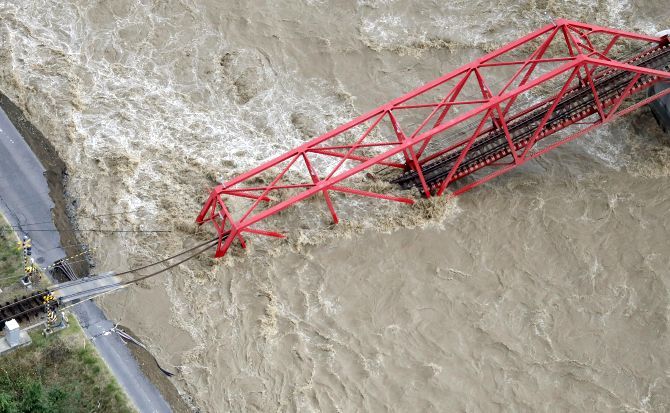
A collapsed railway bridge is seen over Chikuma river swollen by Typhoon Hagibis in Ueda, central Japan. Photograph: Kyodo/Reuters
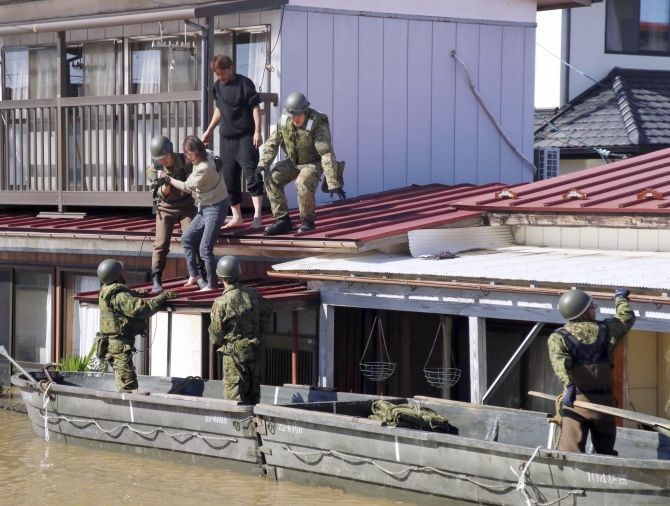
Local residents are rescued by Japanese Defence-Force soldiers from a flooded area caused by Typhoon Hagibis in Kakuda, Miyagi prefecture, Japan. Around 27,000 Self-Defense Forces personnel are taking on rescue operations, said Japanese Prime Minister Shinzo Abe. Photograph: Kyodo/Reuters
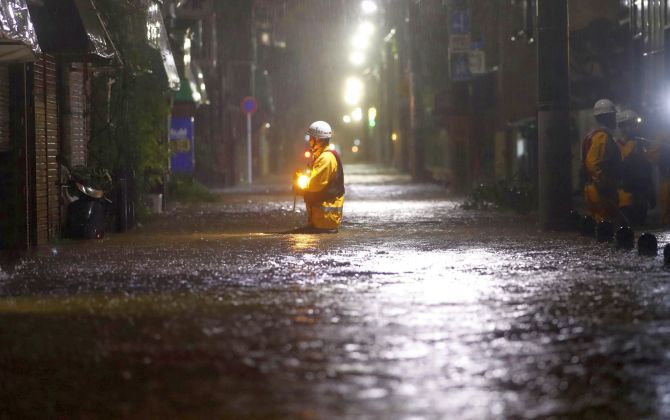
Firefighters patrol on a flooded road due to heavy rains caused by Typhoon Hagibis at Ota ward in Tokyo, Japan. Photograph: Kyodo/Reuters
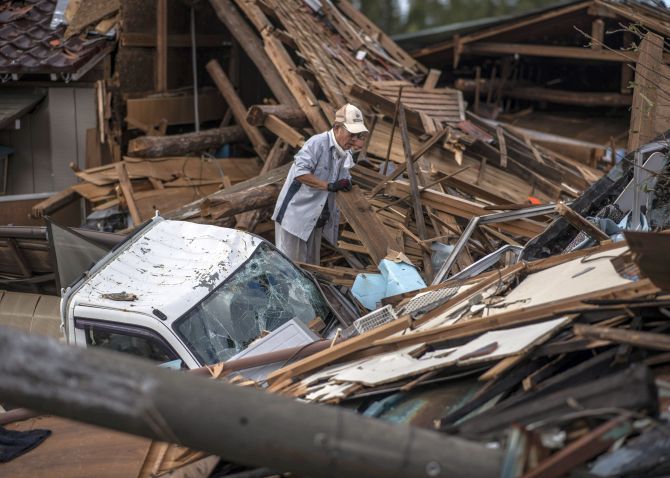
A man sorts through the debris of a building that was destroyed by a tornado shortly before the arrival of Typhoon Hagibis in Chiba, Japan. Photograph: Carl Court/Getty Images

Rescue workers carry a rubber dinghy as they search a flooded area in the aftermath of Typhoon Hagibis, which caused severe floods at the Chikuma River in Nagano Prefecture, Japan. According to reports, roughly 50,000 people took shelter in emergency centres. Photograph: Kim Kyung-Hoon/Reuters
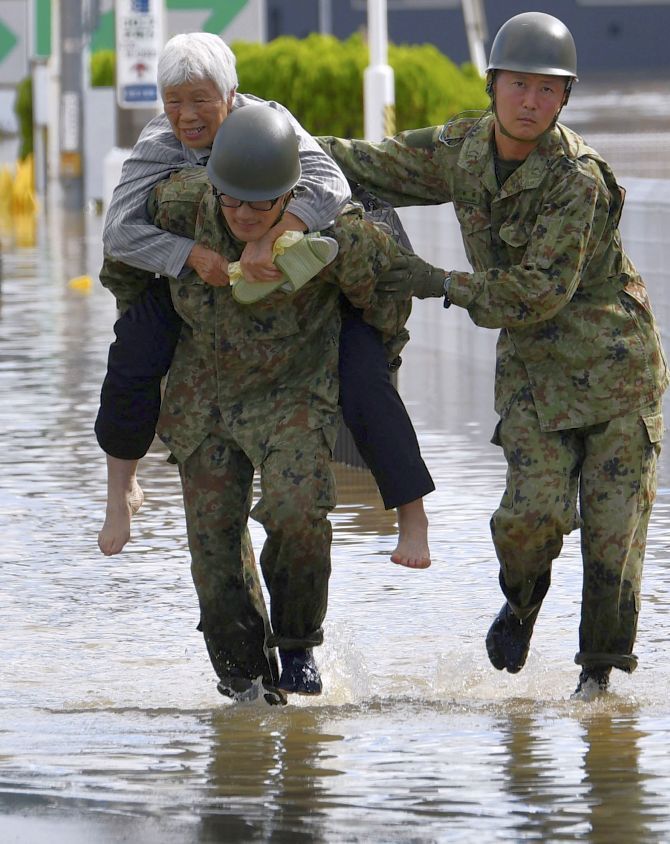
A local resident is rescued by Japanese Self-Defence Forces soldiers from areas flooded by Abukuma river following Typhoon Hagibis in Motomiya, Fukushima prefecture, Japan. UN Secretary General Antonio Guterres on Sunday said that he was 'saddened by reports of loss of life and extensive destruction' caused by Hagibis, and extended his 'deep condolences to the families of the victims'. Photograph: Kyodo/Reuters

A residential area is flooded in Ise, Mie Prefecture, central Japan, ahead of the arrival of Typhoon Hagibis. Photograph: Kyodo/Reuters

Vehicles sit partially submerged under solar panels in floodwater following the passage of Typhoon Hagibis in Sano, Tochigi Japan. Photograph: Tomohiro Ohsumi/Getty Images
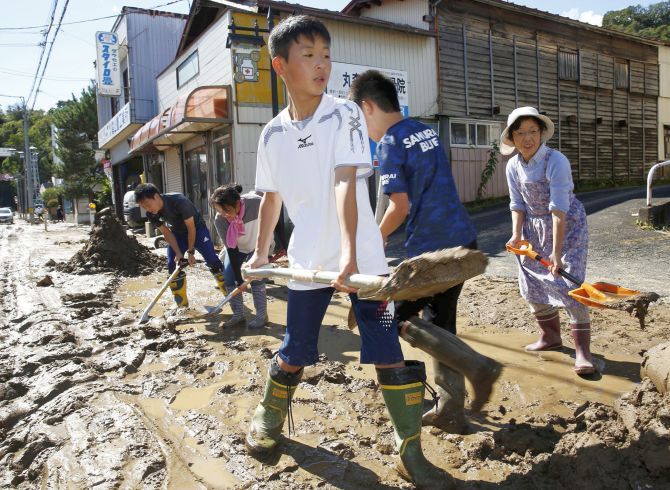
Schoolchildren and residents remove mud after flooding caused by Typhoon Hagibis in Marumori, Miyagi prefecture, Japan. Photograph: Kyodo/Reuters
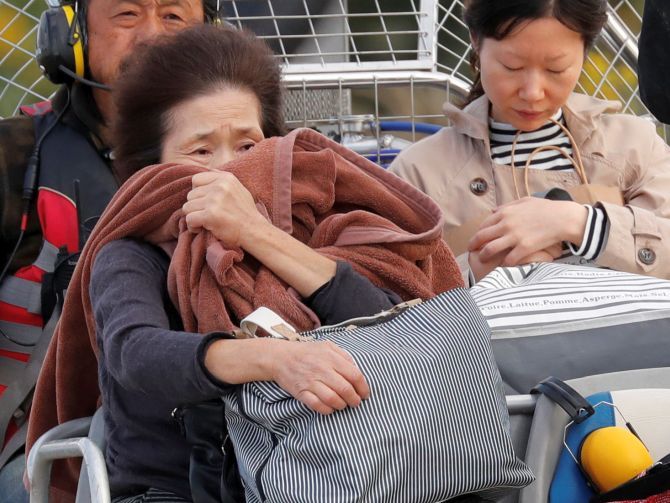
A woman reacts after she was rescued from a flooded area in the aftermath of Typhoon Hagibis, which caused severe floods at the Chikuma River in Nagano Prefecture, Japan. Photograph: Kim Kyung-Hoon/Reuters
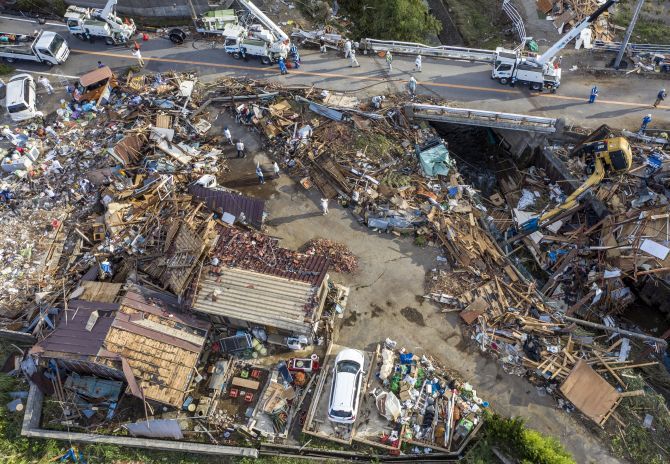











 © 2025
© 2025